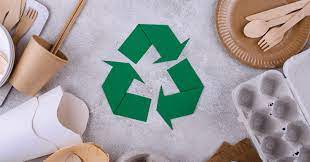Sustainable packaging has become a paramount concern in recent years, as businesses and consumers alike recognize the urgent need to reduce environmental impact. Among the various approaches to sustainability, biodegradable packaging stands out as a promising solution for addressing the challenges posed by traditional plastics and non-recyclable materials.
Understanding Biodegradable Packaging
Biodegradable packaging refers to materials that can naturally decompose over time, returning to the environment without leaving behind harmful residues. Unlike conventional plastics, which can persist in landfills or pollute oceans for centuries, biodegradable alternatives offer a more eco-friendly end-of-life scenario. These materials are typically derived from renewable sources such as plant starches, cellulose, or biopolymers.
Advantages of Biodegradable Packaging
The adoption of biodegradable packaging offers several significant advantages. From an environmental standpoint, it helps mitigate the accumulation of plastic waste in ecosystems and reduces carbon emissions associated with production and disposal. Consumers are increasingly drawn to products packaged in biodegradable materials, viewing them as more ethical and responsible choices.
Challenges and Limitations
However, the widespread implementation of biodegradable packaging faces certain challenges and limitations. One key issue is the lack of standardized regulations and certifications governing biodegradability, leading to confusion and greenwashing in the market. Additionally, the infrastructure for industrial composting, which is necessary for the efficient decomposition of biodegradable materials, remains insufficient in many regions.
Innovations in Biodegradable Packaging
In response to these challenges, researchers and companies are continually developing innovative solutions in biodegradable packaging. New materials and technologies are being explored, such as algae-based plastics, mushroom packaging, and edible packaging films. Case studies demonstrate the successful application of these innovations across various industries, from food and beverage to cosmetics and electronics.
Role of Regulations and Policies
To accelerate the adoption of biodegradable packaging, regulatory interventions and policy initiatives play a crucial role. Governments around the world are implementing measures to incentivize sustainable practices and discourage the use of single-use plastics. Likewise, industry stakeholders are making commitments to improve packaging sustainability through collaborations and voluntary initiatives.
Future Prospects and Trends
Looking ahead, the future of sustainable packaging appears promising, with biodegradables poised for significant growth. Market projections indicate a steady increase in demand for biodegradable packaging materials, driven by consumer preferences and regulatory pressures. Advancements in material science and recycling technologies are expected to further enhance the viability and scalability of biodegradable solutions.
Conclusion
In conclusion, the future of sustainable packaging lies in the widespread adoption of biodegradable alternatives. While challenges persist, including regulatory complexities and infrastructure limitations, ongoing innovations and collective efforts across industries are paving the way for a more environmentally friendly packaging landscape. By embracing biodegradability, businesses can meet consumer expectations, reduce ecological footprints, and contribute to a more sustainable future.

